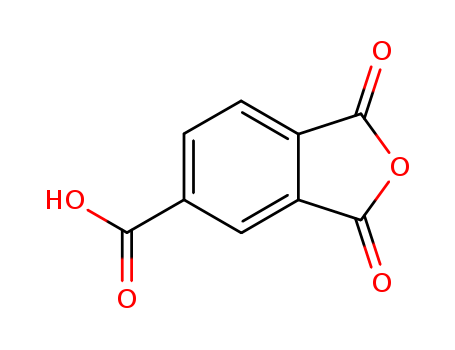- Product Details
Keywords
- Lawesson's Reagent
- 19172-47-5
- C14H14O2P2S4
Quick Details
- ProName: Lawesson's Reagent
- CasNo: 19172-47-5
- Molecular Formula: C14H14O2P2S4
- Appearance: pale yellow powder
- Application: Pharmaceutical Intermediates
- DeliveryTime: within 3-7 day
- PackAge: As required
- Port: shanghai or other
- ProductionCapacity: 5 Metric Ton/Month
- Purity: 98%
- Storage: store at 2-8℃
- Transportation: by sea or by air
- LimitNum: 1 Kilogram
Superiority
Changzhou Xuanming Chemical Co., Ltd. is dedicated to the technology development, manufacturing, import and export chemicals, which are specialized in pharmaceutical intermediates, pesticide intermediate, industry of fine chemicals and custom synthesis. Now, we enjoy good reputation among customers and take favorable market share in domestic and at abroad.
Changzhou Xuanming Chemical CO., LTD is located in Northern Jiangshu Industry Park, we have modern manufacture bases and some laboratories, which can supply the key intermediate for your projects, and short your synthesis scheme and supply you a reference compound for bioassay or a high purity analytical standard. We have been abided by “treat technology as first, quality as basis, customers as God, and be honest and sincere”. It is our final aim to provide environmental and high technological products and meet customers’ requirements according to keep effors on developing new chemical fields.
Changzhou Xuanming Chemical CO., LTD promises to help you with heart and soul.


Details
| Lawesson's Reagent Basic information |
| Product Name: | Lawesson's Reagent |
| Synonyms: | 1,3,2,4-dithiadiphosphetane,2,4-bis(4-methoxyphenyl)-,2,4-disulfide;P-METHOXYPHENYLTHIONOPHOSPHINE SULFIDE DIMER;P-METHOXYPHENYLTHIOPHOSPHINE SULFIDE, DIMER;LR;LAWESSON REAGENT;LAWESSON'S REAGENT;AURORA KA-1707;4-METHOXYPHENYLTHIOPHOSPHORIC CYCLIC DI(THIOANHYDRIDE) |
| CAS: | 19172-47-5 |
| MF: | C14H14O2P2S4 |
| MW: | 404.47 |
| EINECS: | 242-855-4 |
| Product Categories: | -;Dithietanes;Simple 4-Membered Ring Compounds;Sulfur Compounds (for Synthesis);Synthetic Organic Chemistry;Ring Systems |
| Mol File: | 19172-47-5.mol |
| Lawesson's Reagent Chemical Properties |
| Melting point | 228-230 °C(lit.) |
| storage temp. | water-free area |
| form | Powder |
| color | White to almost white |
| Water Solubility | Decomposition |
| Sensitive | Moisture Sensitive |
| Merck | 14,5391 |
| BRN | 1024888 |
| CAS DataBase Reference | 19172-47-5(CAS DataBase Reference) |
| EPA Substance Registry System | 1,3,2,4-Dithiadiphosphetane, 2,4-bis(4-methoxyphenyl)-, 2,4-disulfide(19172-47-5) |
| Safety Information |
| Hazard Codes | Xn-F,Xi,Xn,F |
| Risk Statements | 20/21/22-15/29-37 |
| Safety Statements | 8-43-36/37-22-38-7/8 |
| RIDADR | 3278 |
| WGK Germany | 3 |
| F | 13-21 |
| TSCA | Yes |
| HazardClass | 4.3 |
| PackingGroup | III |
| HS Code | 29349990 |
| Lawesson's Reagent Usage And Synthesis |
| description |
Lawesson's reagent, also known as Lloyd's reagent, is a commonly used chemical reagent in the preparation of organic sulfur compounds. At room temperature under normal pressure, it appears as the solid yellow powder with a strong smell of rotten. In 1956, it was first successfully produced by the reaction between arene and tetraphosphorus decasulfide. The Swedish chemist Sven-Olov Lawesson has carefully studied its reaction with organic compounds, so that its application has been greatly promoted, so the name also derived. The molecule of the Lawesson's reagent contains the four-membered ring structure alternately composed of sulfur and phosphorus. Upon being heated, it undergoes depolymerization, generating two molecules of unstable ylide (R-PS2), which are the major reactive intermediates. Upon application of the Lawesson’s reagents with two different substitution groups for reaction, it has been observed of molecules with substituent group exchanged with each other in the 31 NMR spectrum of the product, confirming the existence of the intermediates, R-PS2. Lawesson's reagent is an oxygen-sulfur exchange reagent with the most common application being for the preparation of thioamides and converting carbonyl compounds into sulfur carbonyl compounds. The reacted substrates can include ketone, ester, lactone, amide, lactam, and quinone. The electron-rich carbonyl groups are easier to react. Upon reaction with α, β-unsaturated aldehydes and ketones, the double bond is not affected. |
| reactions |
1, aliphatic, aromatic and heterocyclic aromatic amide can have reaction with Lawson well. Tetra-sulfide is also commonly used sulfide reagents, but its usage can sometimes result in amide decomposition into nitrile and hydrogen sulfide, so that the reaction yield is reduced. 2. A mixture of silver perchlorate and Lawson's reagent can be used as an oxygen-reactive Lewis acid to catalyze the Diels-Alder reaction of dienes with α, β-unsaturated aldehydes. 3, 4-dione is cyclized to thiophene upon reaction with a Lawesson's reagent. It is also possible to react with tetrasulfide pentasulfide, but the reaction requires a higher temperature. 4, Lawesson's reagent can react with sulfoxide to generate thio products, and then generate sulfur ether through desulfurization. Therefore, it can be used as the reducing agent of sulfoxide. 5, the yield of the reaction between the Lawesson's reagent and the amide with the adjacent position of the benzene ring connecting with hydroxyl or amino group is not high, because of generating the following by-products. The reaction can be used for the preparation of thio-monoalkylphosphonate compounds. |
| similar products | Many compounds similar to Lawesson's reagent compounds have been prepared. They are easier to use than the Lawesson's reagent with the reaction conditions being mild and the yield being relatively high. When the methoxyphenyl group is substituted with an alkyl group such as methyl, ethyl, isopropyl or butyl, the generated reagent is called Davy reagent (DR). When the substituent group is phenylthio group, the generated reagent is referred to Japanese reagent (JR). When the substituent group is p-phenoxyphenyl group, it is referred to as the Belleau reagent (BR), All of them can be prepared from the reaction between the corresponding mercaptans and tetrasulfide pentasulfide. |
| Uses | Vulcanizing agents, which have recently been used to generate tropothione in situ at room temperature and capture the sulfur hybrid reagents with dienophiles. |
| Chemical Properties | light yellow to beige powder |
| Uses | Thiation reagent. |










